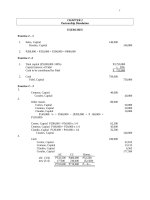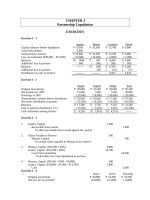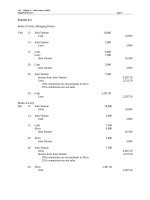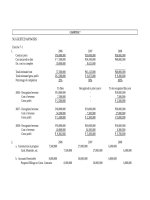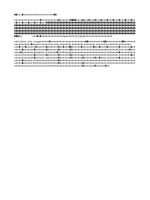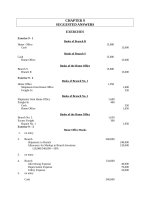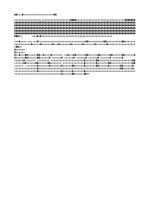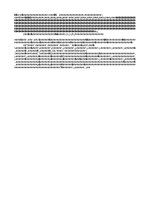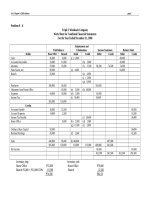Solution manual managerial accounting by cabrera 2010 chapter 17 answer
Bạn đang xem bản rút gọn của tài liệu. Xem và tải ngay bản đầy đủ của tài liệu tại đây (46.88 KB, 2 trang )
MANAGEMENT ACCOUNTING (VOLUME II) - Solutions Manual
CHAPTER 17
APPLICATION OF QUANTITATIVE TECHNIQUES IN
PLANNING, CONTROL AND DECISION MAKING - I
I.
Questions
1. a. Decision tree analysis provides a systematic framework for
analyzing a sequence of interrelated decisions which may be made
over time. Decision making is formulated in terms of the
consequence of acts, events and consequences because it is
believed that present decisions affect future profitability. The study
and understanding of alternative scenarios is encouraged with the
use of decision tree analysis.
b. Advantages of Decision Tree Analysis
1. Clarifies the choices, risks, and monetary gains involved in an
investment problem.
2. Presents the relevant information more clearly.
3. Combines action choices with different possible events or
results of action which are partially affected by chance or other
uncontrollable circumstances.
4. Encourages the focus on the relationship between current and
future decisions.
5. Utilizes such analytical techniques as present value and
discounted cash flow.
6. Considers various alternatives with greater ease.
Weaknesses of Decision Tree Analysis
1. Not all events that can happen can be/are identified.
2. Not all the decisions that must be made on a subject under
analysis are listed because choices are usually not restricted to
two or three.
3. If a large number of choices is involved, decision tree analysis
by hand becomes complicated.
4. Uncertain alternatives are generally treated as if they were
discrete, well-defined possibilities.
2. Refer to page 665 of the textbook.
II. Multiple Choice Questions
17-1
Chapter 17 Application of Quantitative Techniques in Planning, Control and Decision Making - I
1.
2.
3.
4.
5.
A
A
B
B
B
6.
7.
8.
9.
10.
C
B
D
A
D
11.
12.
13.
14.
15.
B
D
C
B
A
17-2
16.
17.
18.
19.
20.
B
C
D
D
A
21.
22.
23.
24.
25.
B
D
B
B
D
